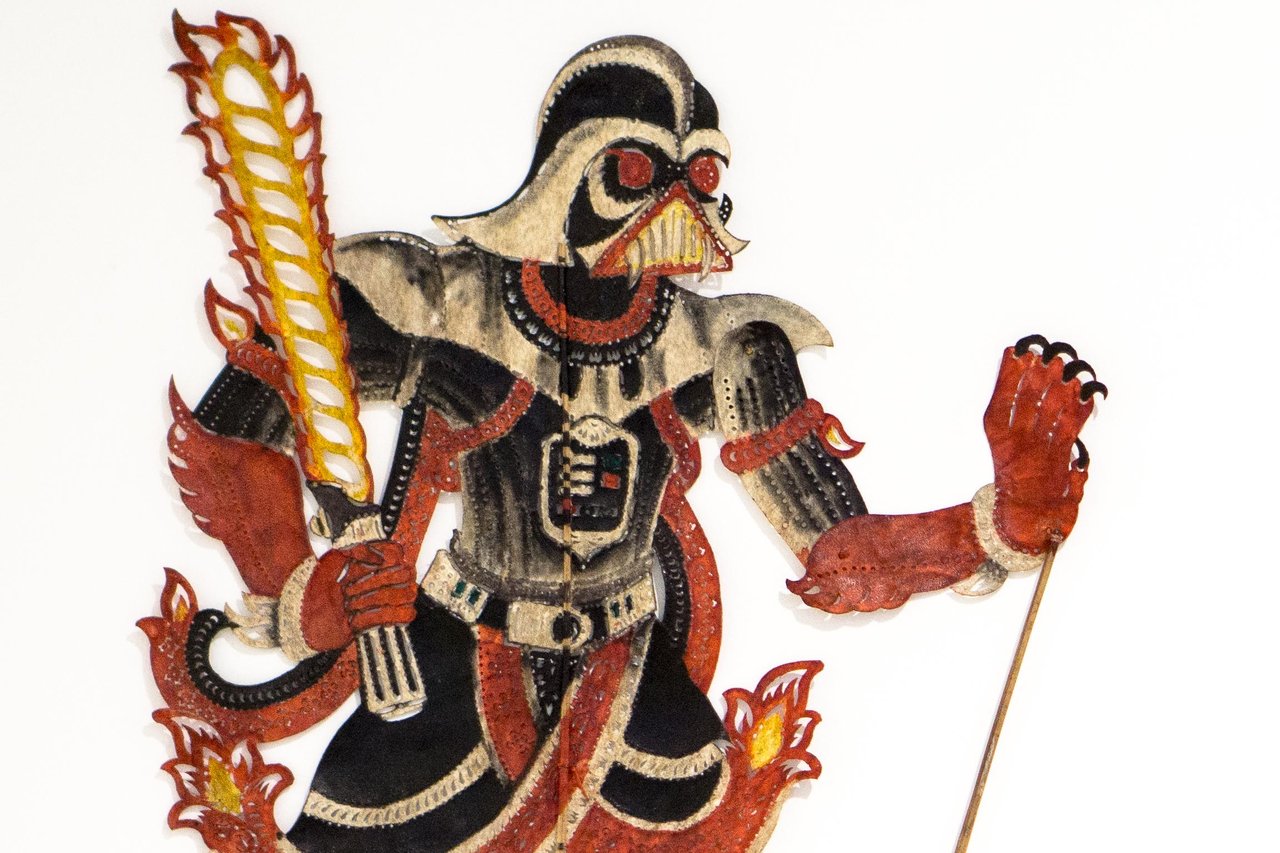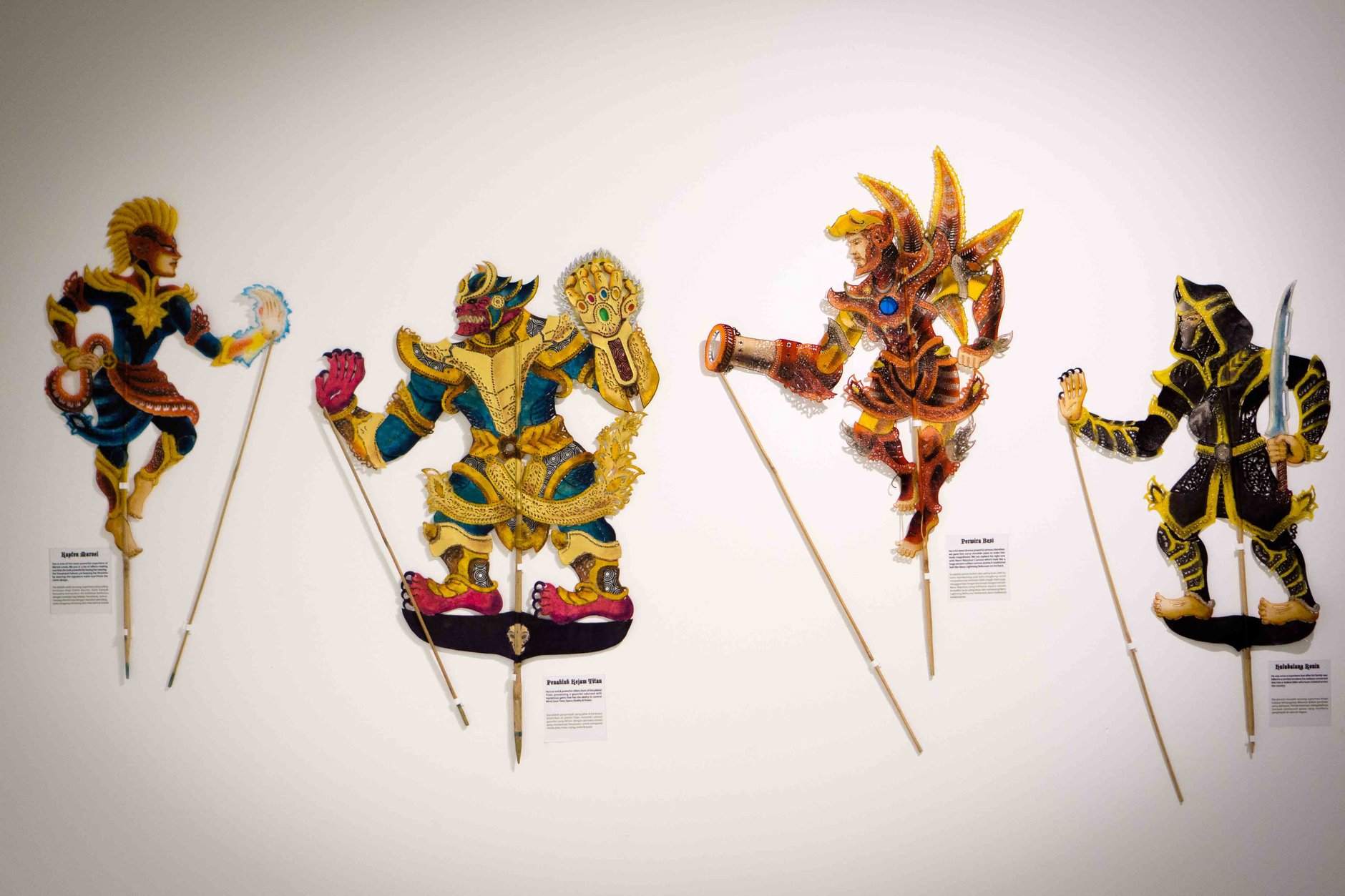KUALA LUMPUR, Malaysia (CN) — When around 50 people sat down for a Malaysian shadow theater show this year in the country’s capital of Kuala Lumpur, most of them probably had little idea what they were about to witness.
An elderly puppetmaster sat on the floor hidden behind a wide rectangular white sheet. From the audience's perspective, the sheet is something of a stage.
Soon enough, silhouettes popped up out of nowhere on the sheet, moving with small and quick motions. The movements came from the puppetmaster, who used both arms to swing figures behind the sheet as traditional gamelan music guided his movements.
Shadow theater, or wayang kulit as it’s known in Malaysian, is typically accompanied by such gamelan music.
Traditionally, a gamelan orchestra of at least five musicians set the tone for these shows with the sounds of gedombak drums, tiny pings from finger cymbals and a snake-charming flute. There’s no live music for this event, and the audience must instead settle for music from speakers.
That’s about where the comparisons with traditional wayang kulit end, though. A small burst of laughter filled the room as shadows of R2-D2 and C-3PO appeared behind the sheet. C-3PO asked a question and R2-D2 gave a beep-beep answer as the unlikely pair started the show off with some comic relief.

The sheet turned blood orange. The “Imperial March” song from Star Wars played. Audience members clapped and laughed as the “Fallen One” (aka Darth Vader) arrived, striking fear among his fellow shadow puppets.
In some ways, it was classic wayang kulit — but this particular story came from a galaxy far far away.
“Even my mom knows who Darth Vader is,” Tintoy Chuo, founder of the Malaysian art collective Fusion Wayang Kulit, previously told reporters, explaining why characters like R2-D2 show up in the stories he tells.
The goal, he says, is to catch the audience with something recognizable, like characters from Star Wars and popular comic books. In doing so, he hopes to spark interest from the audience in traditional wayang kulit.
Welcome to Fusion Wayang Kulit, a modern take on an ancient form of Southeast Asian entertainment. While such shows are still common at events like weddings and holidays, the number of performances is dropping today in Malaysia, much to the chagrin of wayang kulit enthusiasts.
Equipped with a passion for Star Wars and a diploma in graphic design from the Malaysian Art Institute, artist Tintoy Chuo, working with co-creator Take Huat, in 2012 started incorporating modern elements like Darth Vader into traditional shadow-puppet plays. The idea has proven a hit in Malaysia — and 11 years later, Fusion Wayang Kulit is still going strong.
"Although we’re performing for entertainment, we are trying to educate people about this art as well, so that more people will know and understand the art form better," Chuo said in an interview with Courthouse News this summer at his gallery in Kuala Lumpur. "The main goal is to revive this so-called ‘fading’ art form.”

Chuo and Huat are not the only people trying to keep wayang kulit alive. Both the Malaysian government and UNESCO are trying to preserve the tradition, seeing it as a vital part of Malaysian history and national identity.
Wayang kulit used to be popular in Malaysia, especially in rural areas. A wealth of stories were told, including stories from old Indian epics like the Ramayana and Mahabharata. The plays could take up to 45 nights to finish — time that few in modern Malaysia have to spare.
Historians disagree on whether the art form started in India or elsewhere in Asia. The earliest evidence of the art form in Southeast Asia comes from 9th century writings found on the Indonesian island of Java. In Malaysia, shows have happened for at least 500 years, with the first recorded example coming from what’s now the Malaysian state of Kelantan near Thailand.











